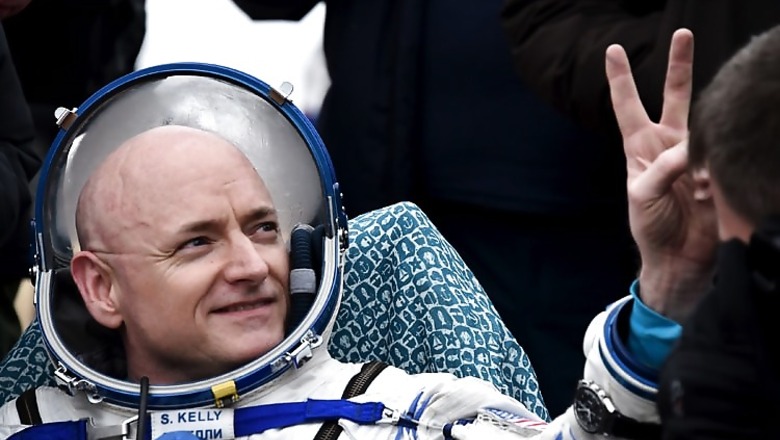
views
New York: The rainbow hues of lakes that dot the Himalayas helped NASA astronaut Scott Kelly keep his wits during his 340-day mission aboard the International Space Station which aimed at studying the effects of weightlessness in humans, the media reported.
"The earth is a beautiful planet," Kelly said during a press conference on Friday in Houston, as he described the striking colours of the waters around the Bahamas and the beautiful lakes that dot the northern Himalayas.
He said he would like to visit that region, though he would first need to learn "which country actually owns it", the Guardian reported.
"It seemed like I lived there forever," said the former navy pilot, describing the length of his mission as the biggest challenge. "Maybe occasionally you do go bananas," he added.
But the view from the space "is great, too", he said. The astronaut posted some spectacular photos on social media of the Earth’s cities, landscapes, oceans and atmosphere which he captured through the windows of the space station's cupola module.
Besides the serene lakes of Himalayas, he said he focused on “milestones” such as the next crew arrival, science projects, spacewalks and the presidential primaries. “That made a big difference to me, just for my sanity,” he said.
The astronaut, however, did see the entire system of pollution -- smoke clouds from wildfires that covered parts of the US, and sections of Asia with continuous, visible pollution nearly all year round.
“The planet will get better, it’s us that won’t be here because we will destroy the environment,” Kelly warned.
The world’s thin shield of atmosphere “makes you more of an environmentalist after spending so much time looking down”, he said.
“It’s for us to take care of the air we breathe and the water we drink. And I do believe we have an impact on that and we do have the ability to change it, if we make the decision to,” said the astronaut who along with Russian cosmonaut Mikhail Kornienko landed in Kazakhstan on Wednesday.
Kelly also spoke about his temporary height gain in space, which has generated significant attention. The low gravity of space elongated the astronaut's spine during his time in orbit, making him 1.5 inches taller on his return.
“There are things we are going to discover about our experience in space in the space station that we don’t even know now,” Kelly said.
Scientists also studied the differences between the astronaut and his twin brother, Mark, a retired astronaut, back on Earth.
The tests will continue, to help NASA learn about how the body copes with the severe strains of spaceflight.
NASA aims to send a manned mission to Mars by 2035, a vast roundtrip journey that could take more than two years. However, Kelly himself predicted that he would not fly again with the space agency.




















Comments
0 comment